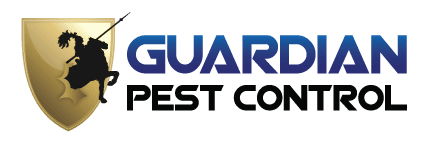Professional Recommendations for Vole Control Utah County
Professional Recommendations for Vole Control Utah County
Blog Article
Comprehensive Bug Control Solutions to Combat Vole Infestations
By utilizing a combination of identification, exclusion, habitat, and capturing alteration strategies, specialist parasite control solutions can supply a customized solution to combat vole problems. The vital lies in applying a well-rounded strategy that not just gets rid of existing voles but also establishes lasting control procedures to protect against future invasions.
Vole Identification and Inspection
When checking for voles, look for their characteristic runways, burrow openings, and munched plant roots. Nibbled plant roots are an additional sign of vole activity, showing their visibility and possible damage to plant life. By accurately identifying these signs, parasite control experts can customize their methods to successfully take care of vole problems and protect gardens and lawns from additional injury.

Trapping and Elimination Strategies
Efficient bug control methods for taking care of vole problems frequently include utilizing specialized capturing and elimination strategies. Capturing is a commonly made use of approach to capture voles and relocate them away from residential or commercial properties.
When setting up traps, it is important to ensure they are put appropriately and baited with vole-preferred food sources like peanut butter, seeds, or fruits. Consistently examining the catches is important to promptly get rid of recorded voles and stop distress or damage to the animals. Once trapped, voles should be transferred to ideal environments far from human residences to avoid re-infestation.
In addition, exemption methods, such as setting up barriers or secure fencing underground, can assist discourage voles from accessing particular locations. Correct disposal of caught voles and consistent surveillance of vole task are necessary elements of an effective capturing and elimination technique in vole infestation monitoring.
Exclusion and Barrier Approaches

To efficiently implement exemption and barrier methods, a comprehensive inspection of the home is important to recognize vole activity and potential access points. By addressing these susceptabilities and carrying out targeted exclusion and obstacle steps, home owners can significantly lower the danger of vole problems. Routine upkeep and monitoring are critical to guarantee that obstacles remain undamaged and effective in discouraging voles from accessing at risk areas. Eventually, a mix of trapping, removal, and aggressive exclusion steps can aid efficiently handle vole populaces and safeguard residential or commercial properties from problems.
Habitat Adjustment and Avoidance
To mitigate vole invasions, environment alteration and avoidance strategies concentrate on altering the setting to dissuade vole habitation. One effective method is decreasing the accessibility of food sources by keeping lawn trimmed short, removing weeds and debris, and keeping a clean lawn. Voles are drawn in to areas with dense vegetation and mess, so developing open rooms can assist discourage them from clearing up in the area. Additionally, decreasing excess moisture by dealing with dripping pipelines, guaranteeing proper drainage, and getting rid of standing water can make the atmosphere less hospitable for voles.
Including barriers like gravel boundaries or cord mesh underground can also stop voles from delving into gardens or lawns. By executing these environment alterations and prevention steps, residential property proprietors can proactively reduce the danger of vole invasions and shield their outdoor spaces from damage.
Tracking and Follow-Up Methods

Follow-up approaches include reviewing the dealt with locations to check for any kind of signs of vole task. Keeping track of terminals, catches, and visual assessments are commonly utilized techniques to review the success of the insect control procedures. By routinely checking these locations, pest control experts can rapidly determine any kind of resurgence of vole activity and take proactive steps to attend to the concern prior to it rises.
Additionally, documenting the results of monitoring and follow-up activities is important for tracking the development of vole invasion control gradually. These documents aid in recognizing fads, reviewing the effectiveness of various control methods, and making informed choices for future parasite monitoring strategies. Normal follow-up treatments not just aid in protecting against vole re-infestations but additionally add to the total success of parasite control initiatives.
Verdict
Finally, thorough parasite control solutions are necessary for successfully combating vole invasions. By examining and identifying vole populaces, applying capturing and removal techniques, making use of exemption and barrier methods, changing environments, and executing monitoring and follow-up approaches, residential or commercial property owners can efficiently handle and avoid future infestations. It is crucial to attend to vole invasions promptly to stay clear of damage to property and possible health and wellness risks.
By employing a mix of identification, exemption, capturing, and habitat adjustment methods, specialist bug control services can use a customized remedy to deal with vole invasions (vole control utah). By precisely identifying these signs, parasite control professionals can customize their strategies to successfully take care of vole infestations and secure yards and yards from additional injury
Effective insect control techniques for handling vole invasions often include utilizing specialized capturing and elimination techniques.To alleviate vole problems, habitat modification and prevention methods concentrate on altering the environment to dissuade vole habitation.Routine surveillance and follow-up treatments are essential in maintaining vole infestation control steps and making certain lasting success in pest management.
Report this page